Kindly note that the end of this blog post contains a picture of squid dissection and a close up shot of a Dolomedes Spider.
This past week has perhaps been the most wholesome week we have experienced in New Zealand by far (in my opinion at least). We spent almost equal time on all four areas of focus: Cultural Anthropology, Environmental Policy, Terrestrial Ecology and Marine Biology, both through on site learning as well as active participation. We volunteered in local service projects, explored the great outdoors, conducted scientific experiments and were showered in a mairead of informative and engaging talks.
We started off our week by conducting service day in Christchurch. We got to experience first hand New Zealand’s active volunteer and community-based spirit. We worked in a neighbourhood community garden in the morning, digging up corn, processing compost and weeding through the garden plantations. It was interesting learning how a simple garden with aims of bringing the community closer together and providing provisions for the underprivileged managed to lower neighbourhood crime rates by a whopping 40%! After a sweaty morning’s hard work, we were surprised to be rewarded with fresh grown corn, garlic, mint leaves and rosemary. We spent a meaningful afternoon at Habitat of Humanity, helping them sort through their donated linen, clothing and books before they are further categorised in the shop to be sold. The big takeaway from our engagement in local service works is the fact that a group of 20 of us spent only 2 hours (at each service) completing what would have been one person’s full week’s workload.
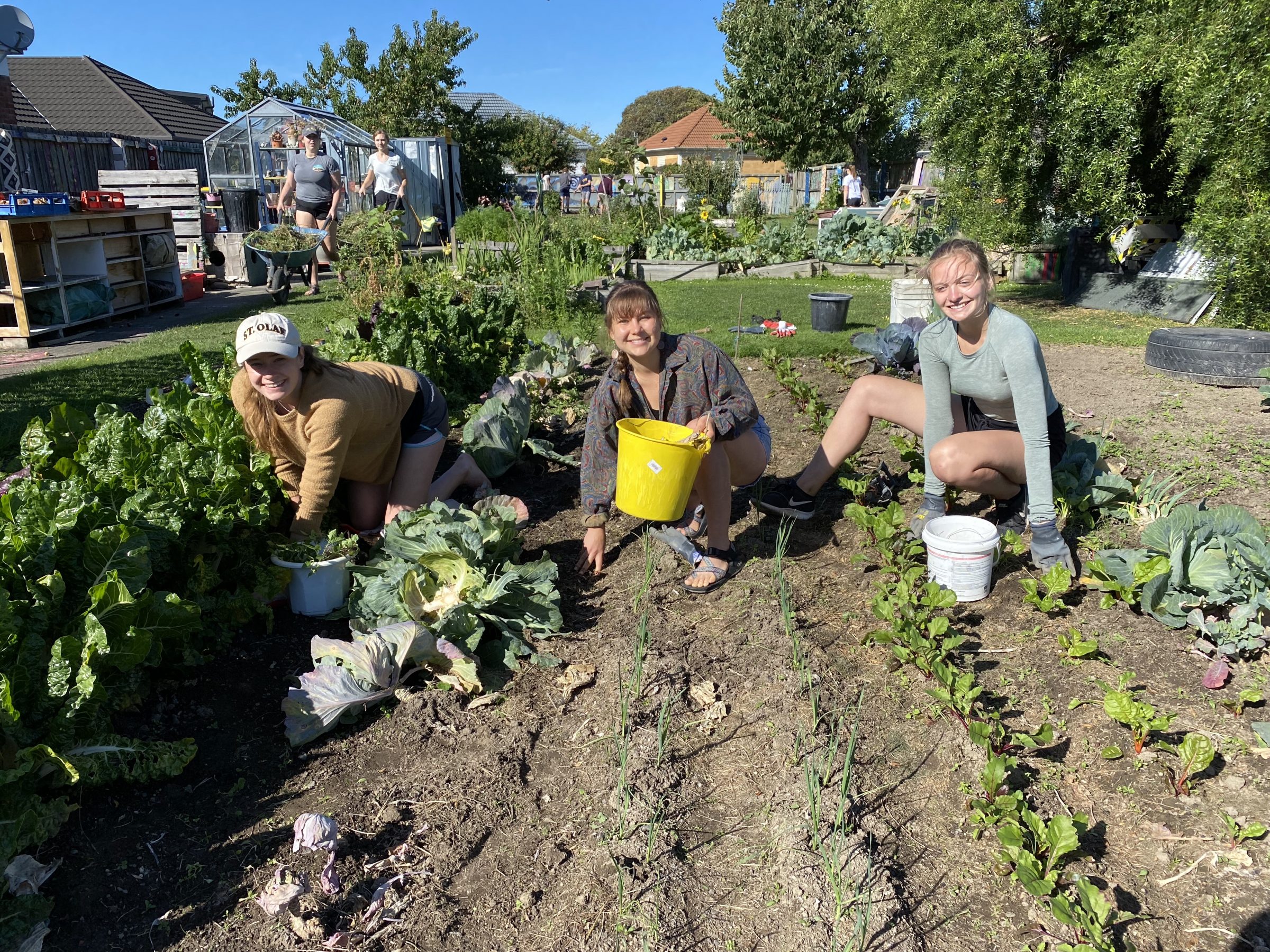
Hard at work removing weeds!
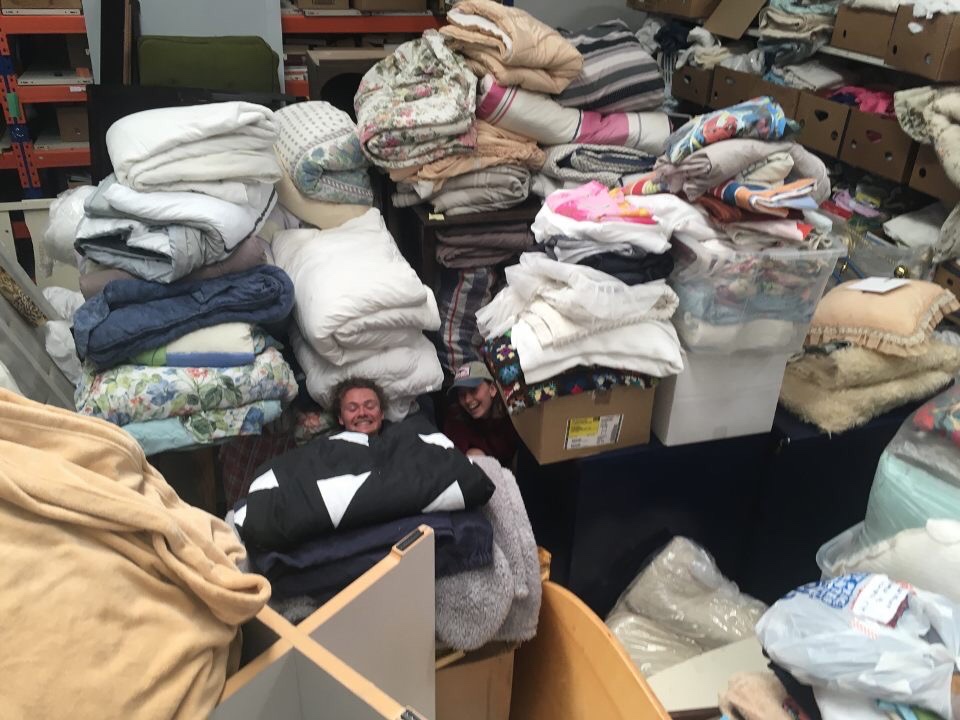
We left Christchurch for Mount Cook Aoraki the very next day. We were greeted by aqua blue lakes from the glacial water as well as a spectacular view of Mount Cook, New Zealand’s highest peak, as we drove towards the mountainous glacial region. Although there was nothing scheduled for our arrival day, all of us took off on multiple different hikes upon our arrival at 3pm. Some of us went looking for lakes to swim in while some of us went on short hikes. I personally went searching for the highest possible peak which we could reach before sunset. We climbed a total of 2200 steps to get a spectacular view of Mount Cook where we were surprisingly greeted by mischievous Keas and chilly weather. We had an early start the next morning with Department of Conservation as we learnt about New Zealand’s heritage sites and national parks. We learnt about how the applied sciences and social sciences tie in to determine the effects of tourism on local climate, landscapes and use of space. The talk ended with a nice walk down Hooker Valley Track with some of us swimming in the valley water and glacial streams. We enjoyed being out in the open lying under the stars at night and watching a satellite launch.
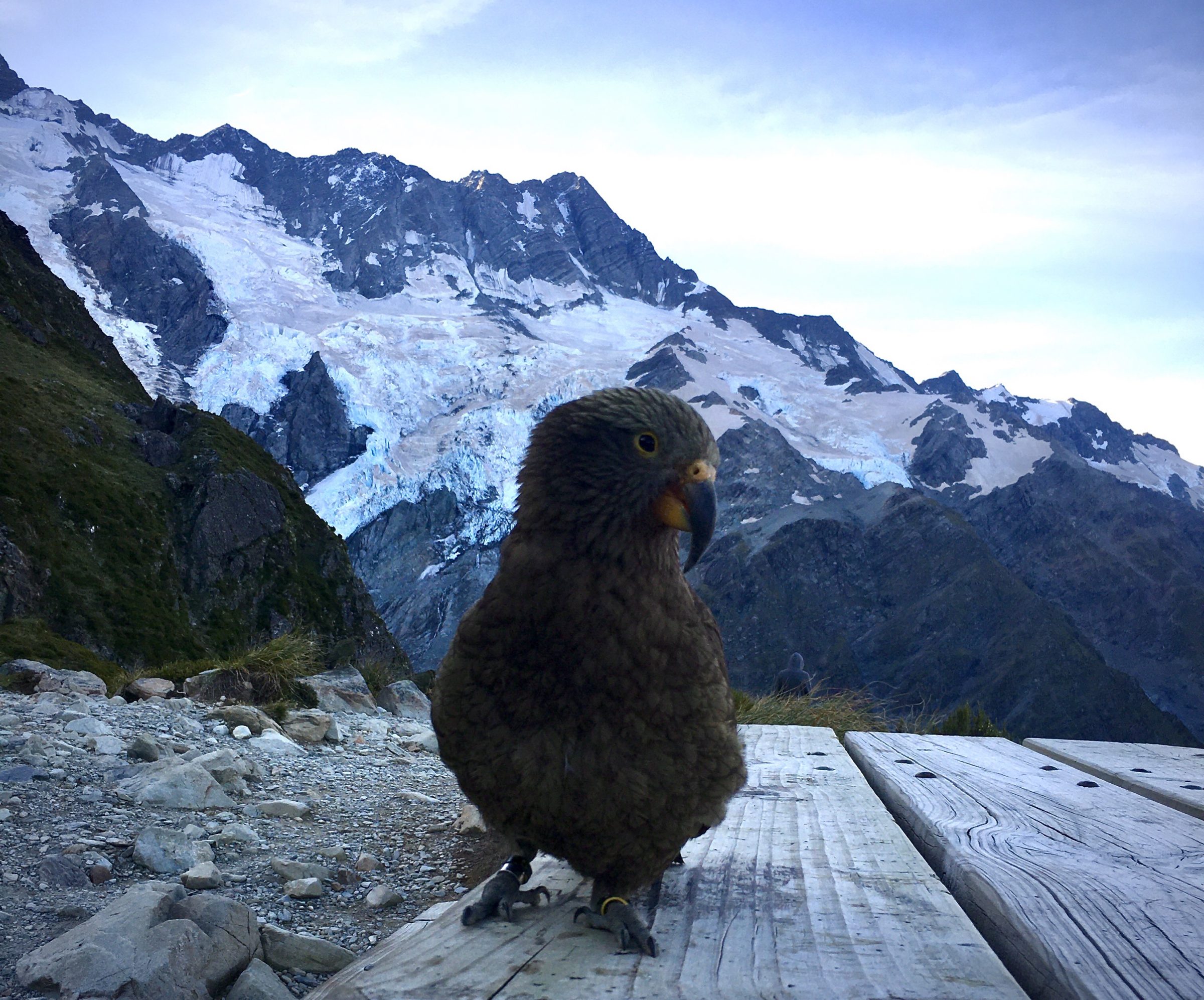
The Kea up to some mischief!
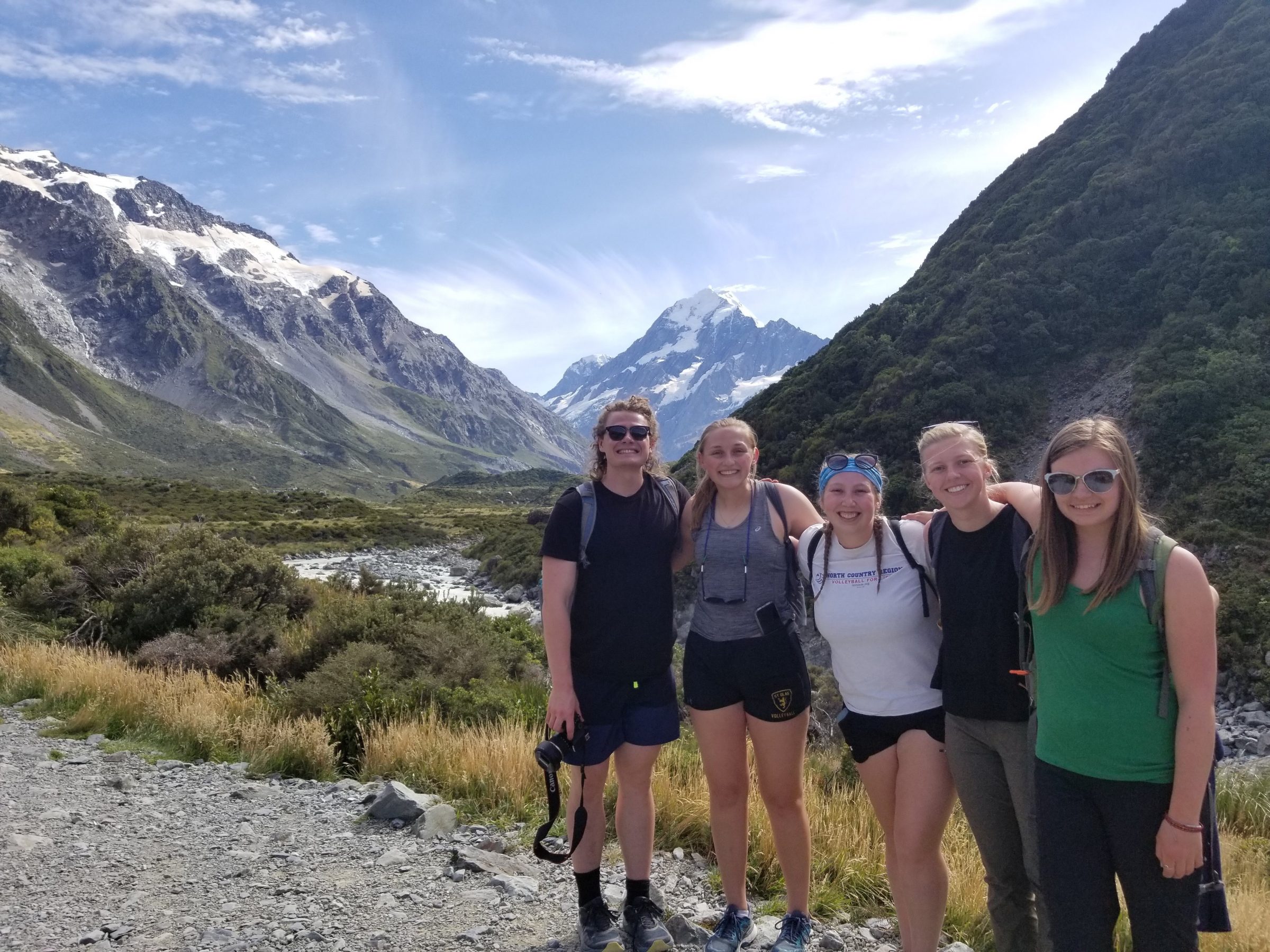
Here we go on a hike!
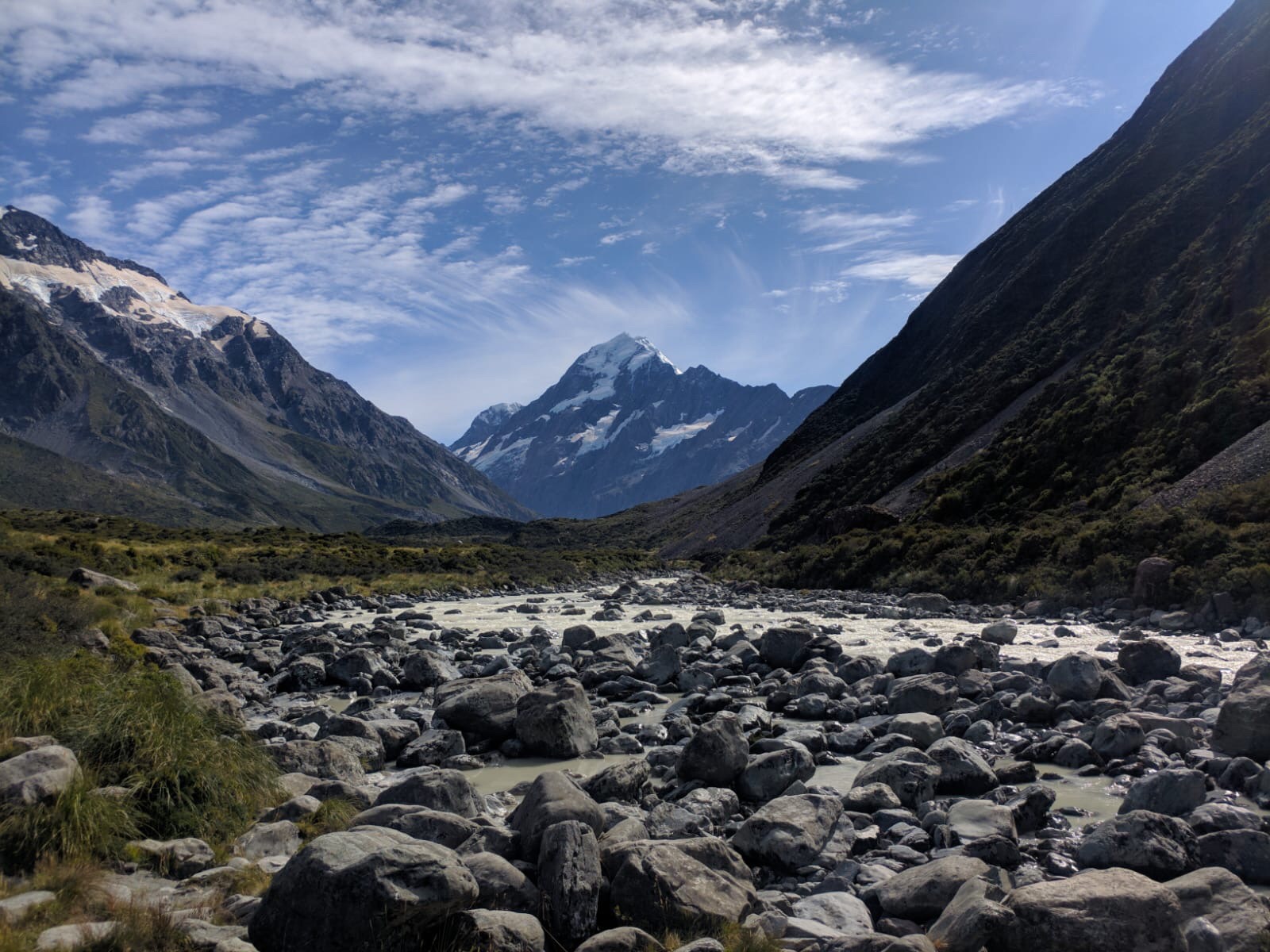
Mount Cook Aoraki
After two beautiful nights under the stars, we continued our journey on to Dunedin, Otago to delve into Marine Biology and Terrestrial Ecology. We were greeted by super energetic and inspiring Tahu (our guide) at Orokonui Ecosanctuary as well as our accompanying professor, Dr. Jean McKinnon. We had the opportunity to explore edible leaves and berries and feed a long-finned eel at the sanctuary. We were even lucky to have fished up a Dolomedes spider from the pond (a rare sight!). Friday was a treat for us as we went out to the Otago Peninsula. We were engaged in wonderful talks revolving around the local marine ecosystems and works. The highlight of the morning was probably the chance to dissect squid and conduct an experiment to determine how multi stressors of lowered pH values and increased temperature affects marine organisms. We adjourned to the Royal Albatross Colony in the afternoon where we were exposed to the varied methods to monitor nesting and feeding habits of penguins through innovative technologies. Needless to say, we saw a few albatross!
Some fun facts about albatross:
-
The local Albatross tour 5 years after taking off, including South America and Africa, before they return to Otago to breed
-
Albatross have a wing span of 3 meters!
-
Albatross mate for life and baby Albatross are raised by both their mother and father
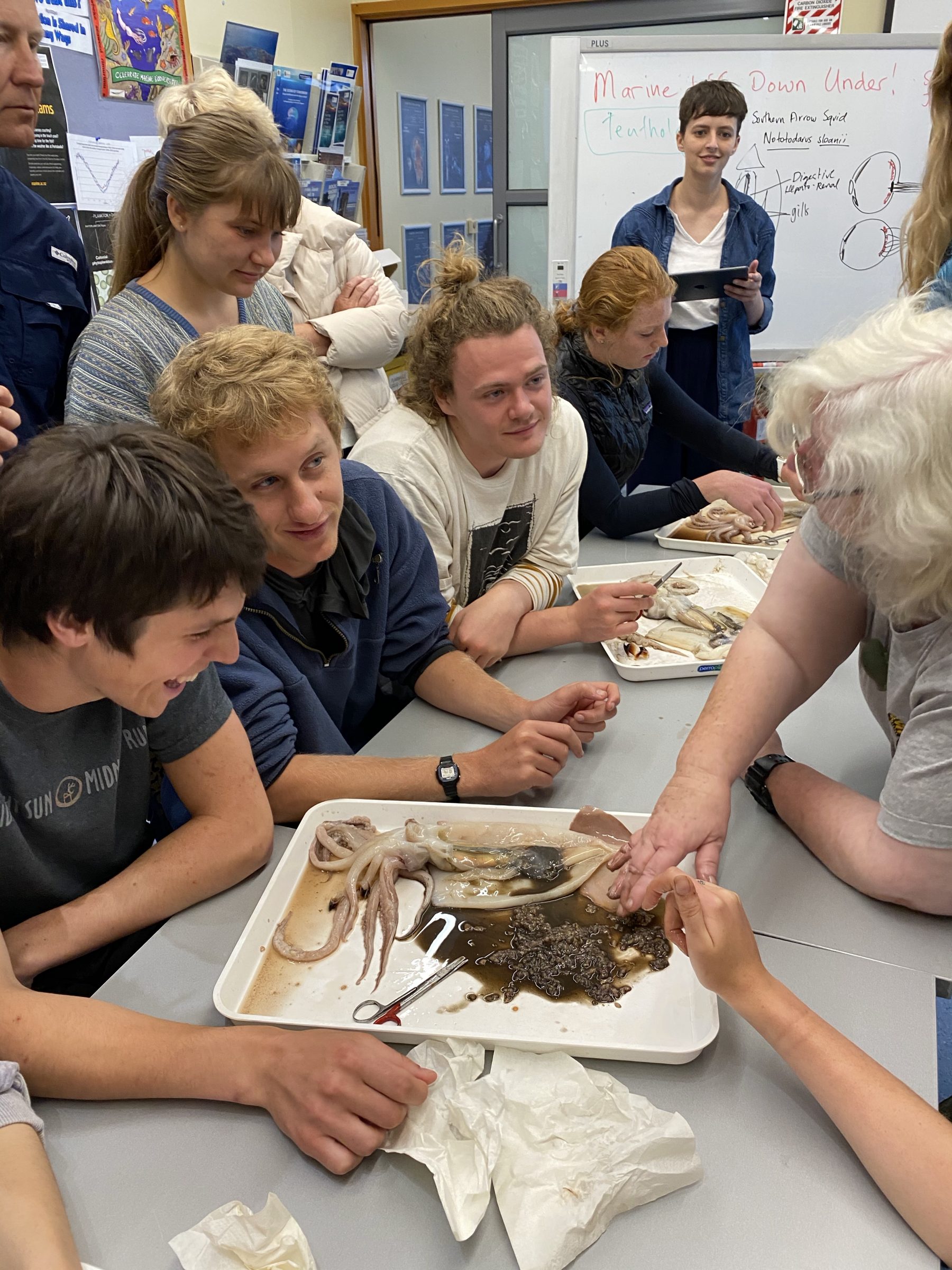
The squid ate a squid!
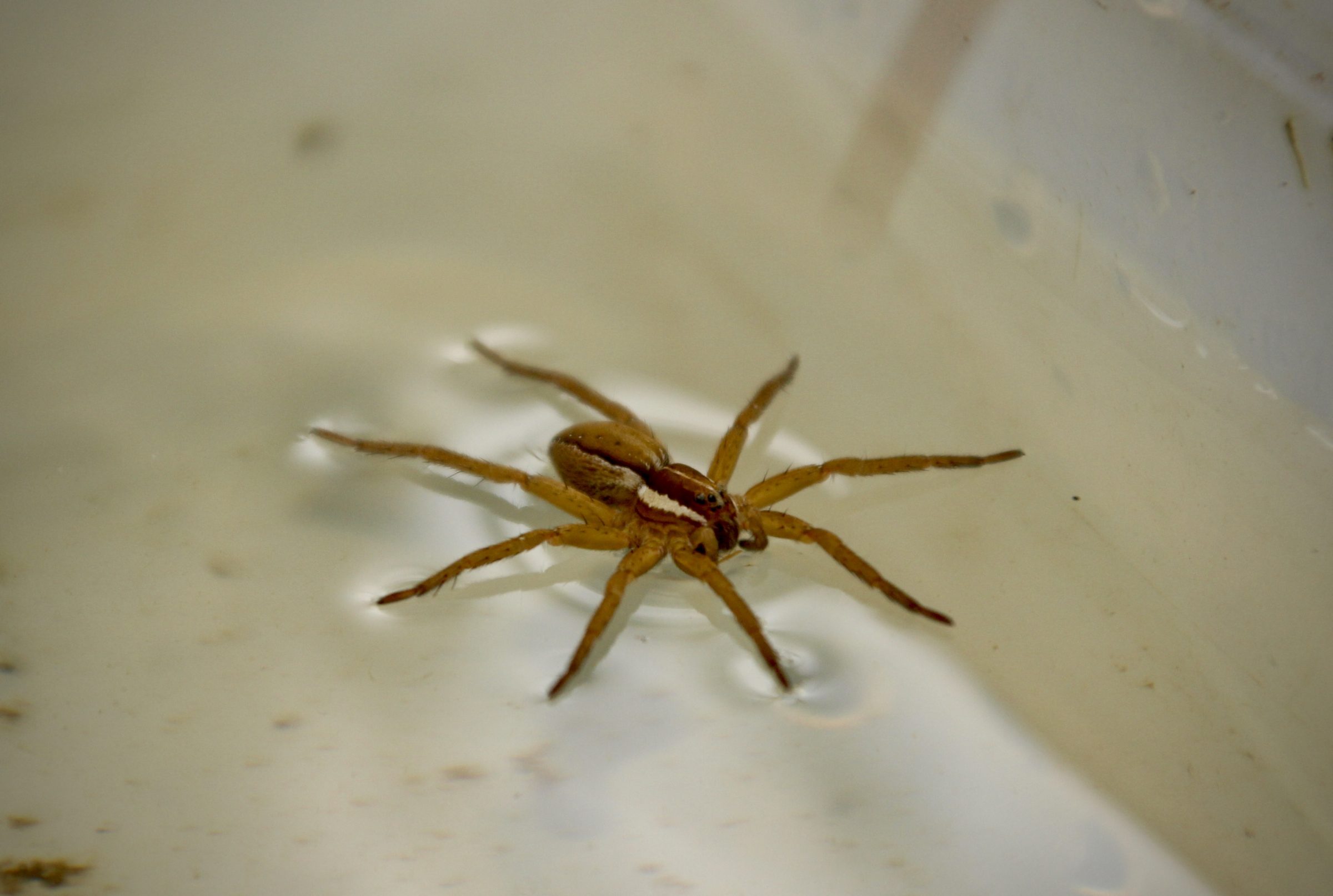
Dolomedes Spider fished out by Rachel Raser
We wrapped up this actively engaging week through a series of informative lectures from Dr. Jean Mckinnon. She shared an array of knowledge on national park policies, cultural Maori influence on land protection, fun facts on marine life such as squids, sharks, fish and plankton and terrestrial animals (did you know that New Zealand frogs are not poisonous and the males carry the eggs on their backs instead of laying them in the water?). It was truly eye opening as Dr. Jean tied all aspects of our studies together. Our lectures ended with a cool talk from Professor Michon highlighting the importance and contribution of field drawing to our lives.
That’s all for now! We are now in Queenstown, our last stop, before we fly off to Australia!
-YiWynn-